TerraMaster D5 Thunderbolt 3: A ‘Mega DAS’ with 5 Bays for 80 TB
by Anton Shilov on March 20, 2020 1:00 PM EST- Posted in
- Storage
- SSDs
- DAS
- Thunderbolt 3
- TerraMaster
- HDD
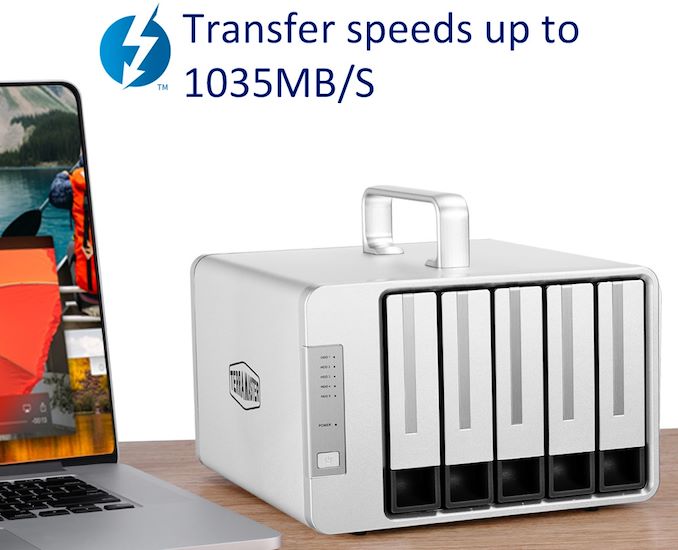
TerraMaster this week introduced its first DAS featuring a Thunderbolt 3 interface. The D5 Thunderbolt 3 DAS with five bays is aimed at professionals who need a vast storage space attached directly to their PC. Using currently available hard drives, the D5 can store 80 TB of data, with peak sequential read speeds up to 1035 MB/s.
As the name suggests, the TerraMaster D5 Thunderbolt 3 can accommodate five 2.5-inch/3.5-inch hard drives or solid-state drives that can work in JBOD, RAID 0, RAID 1, RAID 5, and RAID 10 modes to provide various levels of performance and data protection capabilities. The DAS fully supports all RAID features one expects from a professional-grade storage device (see the table below) that has to ensure maximum reliability, predictable read/write speeds, and automatic RAID rebuild if needed.
Speaking performance, TerraMaster rates its D5 Thunderbolt 3 at up to 1035 MB/s read speed as well as up to 850 MB/s write speed. Such performance levels were measured by the manufacturer using a 5-disk SATA SSD array in RAID 0 mode. To ensure consistent performance and reliability, the DAS has two 80-mm fans.
As far as connectivity is concerned, the TerraMaster D5 Thunderbolt 3 DAS has two Thunderbolt 3 ports to daisy chain it with other TB3 devices as well as a DisplayPort 1.2 output.
Just like many other DAS, the D5 Thunderbolt 3 has a handle as many professionals need a lot of storage space while working outside of their home or office. The box itself weighs 2.3 kilograms, but when fully populated with high-capacity HDDs it will be considerably heavier.
TerraMaster D5 Thunderbolt 3 DAS will be available shortly. Pricing is unknown.
Related Reading
- Promise Launches Pegasus3 External Storage via TB3: Up to 48 TB, 1.6 GBps
- LaCie Launches 6big and 12big: Up to 60/120 TB External Storage with Thunderbolt 3
- HighPoint RocketStor 6618 Thunderbolt 3 DAS: 8-Bays, Up to 96 TB, 2.7 GB/s, $999
- CES 2020: TerraMaster Shows Off 5-Bay F5-422 NAS with 10 Gb Ethernet
- Asustor, QNAP, and Synology Introduce New NAS Units at CES 2020
Sources: TerraMaster


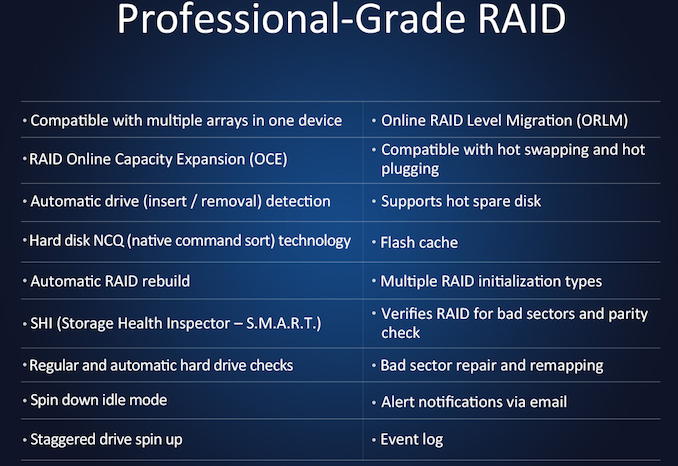
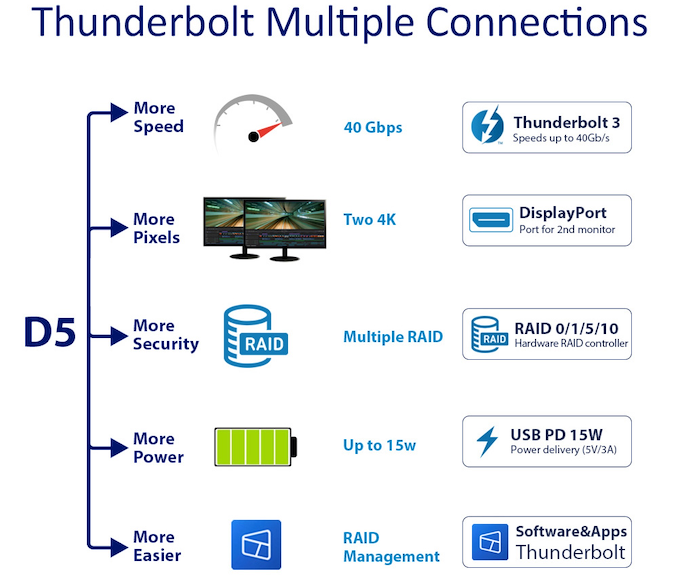
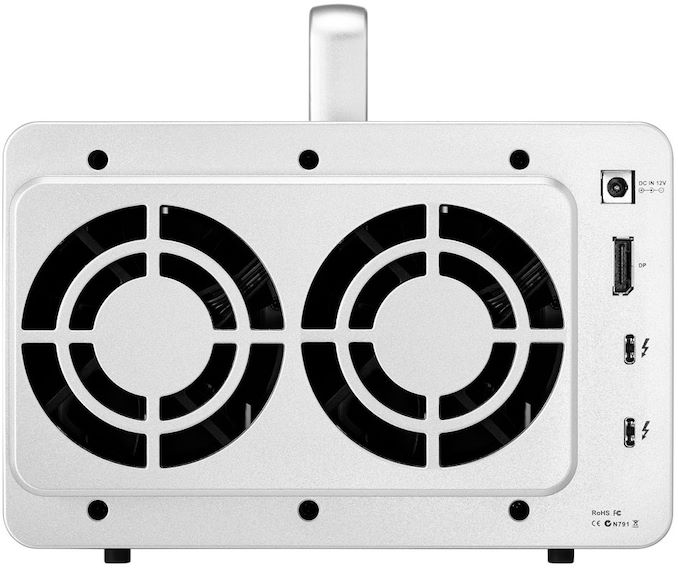
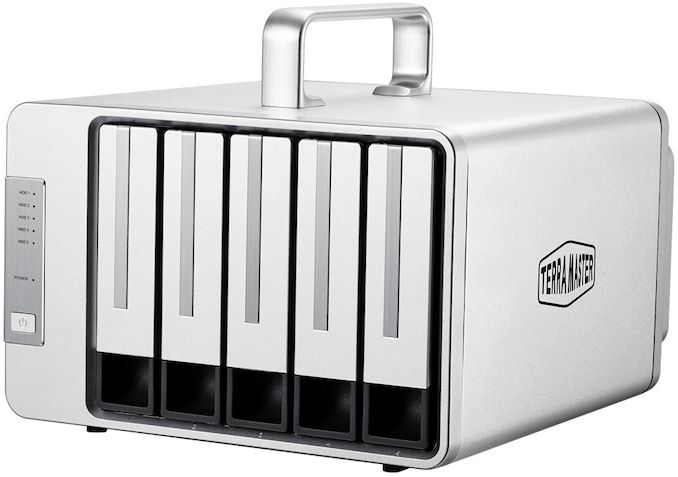








13 Comments
View All Comments
oRAirwolf - Saturday, March 21, 2020 - link
I bought a Terramaster F4-220 as a backup to my primary file server. I regretted it and ended up selling it. The hardware wasn't terrible. I thought the drive trays were chintzy but serviceable. What made me get rid of it was the software. There was no way to setup an rsync task to my primary file server that would be persistent across reboots because everything that was not configured through the interface was wiped out at reboot. This was a deal killer for me because what's the point of a backup server if you can't setup automated backups?While not even in the same ballpark performance, power, ease of use, or size wise, I ended up with a 1U 12x3.5" bay Hyve Cygnus off eBay for the same amount of money. I installed 12x8TB WD Red's in it along with 16GB of ECC memory and a Xeon E3-1220 v2. I flashed the embedded LSI SAS2008 RAID controller to initiator target mode and then installed FreeNAS on it and configured it for RAIDZ2. It makes for a nice backup server with a 10 gigabit connection to my primary server and cost about the same overall in the end. Now if only I could do something about the noise...
Tomatotech - Saturday, March 21, 2020 - link
I'd love something that could take 5-10 nvme m.2 drives. Should be around the size of my hand, with one of these embedded AMD zen CPUs, a few GB of memory and a small fan. Cost around £400 maybe? 20 TB of nvme at around 5GB/s would be lovely.Would need 2x TB3 cables to get that - I think TB3 peaks at around 2.5GB/s. Retrieving a single file might max at 2.5GB/s but retrieving multiple files, might get a total transfer max of the full 5GB/s.
Or forget 3.5" HDDs and just design a cheap fast enclosure that can take a bunch of SATA SSDs and deliver decent speed - with the move to m.2, the price of old SATA SSDs are dropping through the floor, and by specifying SDD only, there's savings to be made in the power supply etc.
I mean, the ASRock A300 is tiny, costs only £130 and comes with PSU, mobo and case, and takes 2x m.2 nvme and 2x SATA, all you need to supply is the drives, processor and RAM. That's almost everything I listed above, just missing TB3 or some other beefy way of passing that data to a bigger desktop.
davidmc - Sunday, April 25, 2021 - link
I think I’d rather go with an external thunderbolt 3 SSD and then have it backed up to my nas. Much quieter and higher performance. Nextinphotography.com